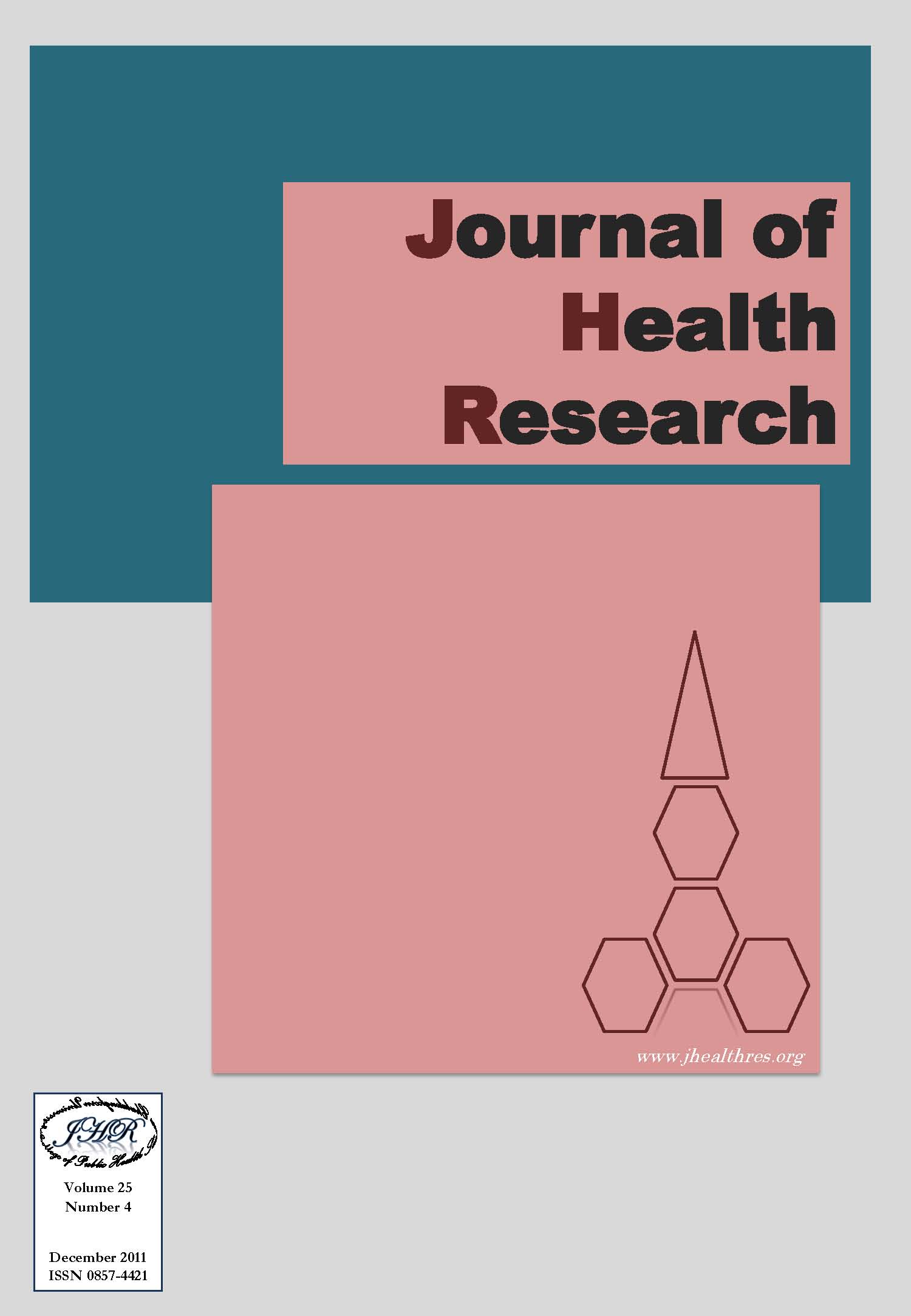Health Risk Assessment of Exposure to Carbonyl Compounds in Gasoline Workers in Bangkok, Thailand
Keywords:
Carbonyl group, Inhalation exposure, Gasoline worker, RMEAbstract
Human risk assessment of volatile organic compounds (carbonyl group) via inhalation exposure route in gasoline station workers was studied during February 2011 in Bangkok, Thailand. The objectives were to measure carbonyl concentrations in gasoline stations and to assess health risk of workers in 4 gasoline stations located in urban and suburban areas of Bangkok. From each gasoline station, 2 workers were randomly recruited. Participants' ages ranged from 18-36 years. The average weight (mean ± SD) was 56.7 ± 8.1 kg. The average working time in urban and suburban areas was 9.3 and 10.0 h/day, respectively. Exposure assessment of gasoline workers was calculated using reasonable maximum exposure (RME) at the 95th percentile. The inhalation intake of carcinogenic carbonyl i.e. formaldehyde and acetaldehyde in workers was in the range of 1.90 × 10-5 to 4.11 × 10-4 mg/kg/day. Risk characterization of cancer was in the range of 2 workers in 10 million to 2 workers in one hundred thousand. For non-carcinogenic carbonyl (formaldehyde, acetaldehyde, benzaldehyde, valeradehyde, propionaldehyde, and butyraldehyde), the inhalation intake of non-carcinogenic carbonyl in workers was in the range of 4.88 × 10-3 to 1.16 µg/m3. To assess non-carcinogenic health effects, the Hazard Index (HI) was used. The results showed that gasoline workers may not be at risk regarding inhalation exposure of non-carcinogenic health effects because the HI was not greater than the acceptable level (HI < 1).







